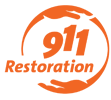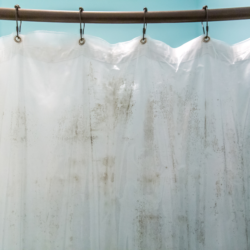Mold and mildew are commonly discussed when it comes to issues surrounding damp and moist environments. Many people use these terms interchangeably, but the truth is, they are not the same thing. Although mold and mildew share similarities, they have distinct characteristics.
What is Mold?
Mold is a type of fungus that thrives in damp and humid environments. It appears in a variety of colors, including black, green, white, and even blue. Some common places where mold thrives are basements, bathrooms, and kitchens. It can also grow on any surface, including wood, carpet, walls, and clothes.
Mold produces spores, which can cause allergic reactions or respiratory problems when inhaled. Exposure to mold can also cause several health issues, including cough, sneezing, irritated eyes, nasal congestion, and skin rashes.
What is Mildew?
Mildew is a type of fungus that thrives in warm, humid environments. It appears as a white or gray powdery film on any surface, including fabrics, leather, and paper. Bathrooms, kitchens, and any area with high humidity are common locations for mildew growth.
Unlike mold, mildew is not harmful to humans. However, it can damage various surfaces and cause discoloration.
How to Identify the Difference Between Mold and Mildew
Now that we know what mold and mildew are, let’s take a look at how to tell them apart.
Appearance: Mold appears in a variety of colors, including black, blue, green, and white. Mildew appears as a white or gray powdery film.
Texture: Mold has a fuzzy, slimy texture, while mildew appears powdery.
Location: Mold grows in any damp, humid environment, while mildew mostly grows on surfaces that are exposed to moisture, like fabrics and paper.
Impact on Health: Mold can cause allergic reactions and respiratory problems when inhaled. Mildew has no impact on human health but can cause harmful discoloration on surfaces.
How to Prevent and Remove Mold and Mildew
Now that we can identify mold and mildew, the next step is to know how to prevent and remove them.
Mold Prevention and Removal
When it comes to dealing with mold, prevention is key. To effectively prevent the growth of mold in your surroundings, it is important to ensure proper ventilation in all areas. Good airflow helps in maintaining optimal moisture levels and discourages mold from taking hold.
ensure proper ventilation in all areas. Good airflow helps in maintaining optimal moisture levels and discourages mold from taking hold.
Additionally, promptly fixing any leaks or water damage is essential, as these create favorable conditions for mold to thrive. Damp areas, such as basements or bathrooms, are particularly susceptible, so utilizing dehumidifiers in such spaces can significantly reduce moisture and inhibit mold growth.
However, despite our best efforts, mold may sometimes still find a way to establish itself. In such cases, it is important to take swift action to prevent further damage and potential health risks. If you notice any signs of mold growth, it is advisable to seek the assistance of a professional mold removal service. Professionals have the expertise and specialized equipment to effectively eliminate mold and prevent its recurrence. It is important to remember that attempting to remove mold yourself can often worsen the situation, as disturbing the mold spores can lead to their dispersal and further contamination.
Mildew Prevention and Removal
One key factor in mildew prevention is keeping fabrics dry. Moisture can easily accumulate on various surfaces such as clothing, curtains, and carpets, providing an ideal breeding ground for mildew. It is essential to promptly dry any wet fabrics and avoid leaving damp items in enclosed spaces. By ensuring proper ventilation and allowing sufficient air circulation, you can significantly reduce the chances of mildew formation.
Bathrooms, with their high levels of moisture and humidity, are particularly susceptible to mildew growth. To combat this, regular airing out of the bathroom is crucial. Opening windows or using exhaust fans can help remove excess moisture from the air, making it less favorable for mildew to thrive. Additionally, wiping down shower walls, bathtub surfaces, and bathroom tiles after use can prevent water from accumulating and creating an environment conducive to mildew growth.
In areas prone to high humidity or where moisture control is challenging, such as basements or laundry rooms, utilizing mold-resistant paint can be an effective preventive measure. Mold-resistant paints contain antimicrobial agents that inhibit the growth of mold and mildew on the painted surfaces. Applying such paint in these high-risk areas adds an extra layer of protection, reducing the likelihood of mildew formation.
However, despite taking preventive measures, mildew growth can still occur in certain circumstances. If you notice the presence of mildew, it is essential to address it promptly to prevent further damage. An effective method to remove mildew is by washing the affected area with a mixture of bleach and water. The bleach acts as a powerful disinfectant, killing the mildew spores and preventing their regrowth. It is crucial to follow proper safety precautions when working with bleach, such as wearing protective gloves and ensuring proper ventilation.
Mold and mildew are not the same thing. While they share some similarities, they have distinct characteristics that set them apart. Knowing how to identify, prevent, and remove them is essential for maintaining a safe and healthy environment. Always hire a professional if you suspect either mold or mildew growth in your home, as prevention is key to maintaining healthy air quality.
If your property is suffering from mold or mildew and you need help, contact a 911 Restoration IICRC-certified technician near you. To find an expert in your location, see our list of service areas here: 911 Restoration Service Areas.



